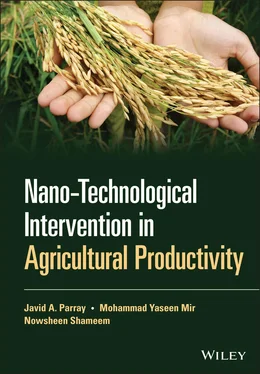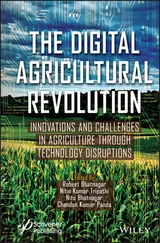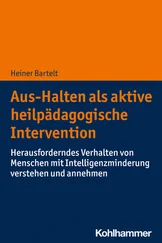NP photodegradation is also a generalized method, which includes the use of several nanomaterials. For photodegradation, Rogozea et al. revealed in a tandem fashion that modified silica NiO/ZnO has been productive because of the minimum size of the high NP surface (<10 nm) [96].
In recent years, there has been rising interest in printed electronics production because printed electronics offer the potential for low‐cost, large‐area electronics for flexible displays and sensors appealing to conventional silicon techniques. As a mass manufacturing process for new forms of electronic equipment, printed electronics with various functional inks containing NPs such as metallic NPs, organic electronic molecules, CNTs, and ceramic NPs are expected to flow quickly [97, 98]. An excellent example of the synergies between scientific discovery and technological growth is the electronic industry. The findings of new semiconducting materials have led to a revolution from aspirated tubes to diodes and transistors and finally to miniature chips [10, 99]. The critical characteristics of NPs that make nanotechnology benchmarks [100] possible for NP to be used in electrical, electronic, or optical applications, including bottom‐up or self‐assembly frameworks, are easy handling.
Because of their large surface area, optical behaviour, and catalytic nature, scientists are changing their research strategies to produce renewable energies from readily available resources at low cost. NPs are the best candidate for this reason. NPs are widely used to generate power from photoelectrochemical (PEC) and electrochemical water splitting [48], especially in photocatalytic applications. Electrochemical CO 2reduction in fuel precursors, solar cells, and piezoelectric generators also provided advanced energy generation options in addition to water splitting [34]. NPs are often used in energy storage applications to reserve animations in various ways at the nanoscale level [101, 102]. Nanogenerators have recently been developed to transform mechanical energy into electricity using piezoelectric power, an unconventional approach to power generation [103].
1 1 Feynman, R.P. (1960). There's plenty of room at the bottom. Eng. Sci. 22: 22–36.
2 2 Khan, I., Saeed, K., and Khan, I. (2017). Nanoparticles: properties, applications and toxicities. Arabian J. Chem. 12: 908–931.
3 3 Tiwari, J.N., Tiwari, R.N., and Kim, K.S. (2012). Zero‐dimensional, one‐dimensional, two‐dimensional and three‐dimensional nanostructured materials for advanced electrochemical energy devices. Prog. Mater. Sci. 57: 724–803. https://doi.org/10.1016/j.pmatsci.2011.08.003.
4 4 Dreaden, E.C., Alkilany, A.M., Huang, X. et al. (2012). The golden age: gold nanoparticles for biomedicine. Chem. Soc. Rev. 41: 2740–2779. https://doi.org/10.1039/C1CS15237H.
5 5 Shin, W.K., Cho, J., Kannan, A.G. et al. (2016). Cross‐linked composite gel polymer electrolyte using mesoporous methacrylate‐functionalized SiO2 nanoparticles for lithium‐ion polymer batteries. Sci. Rep. 6: 26332. https://doi.org/10.1038/srep26332.
6 6 Lee, J.E., Lee, N., Kim, T. et al. (2011). Multifunctional mesoporous silica nanocomposite nanoparticles for theranostic applications. Acc. Chem. Res. 44: 893–902. https://doi.org/10.1021/ar2000259.
7 7 Barrak, H., Saied, T., Chevallier, P. et al. (2016). Synthesis, characterization, and functionalization of ZnO nanoparticles by N‐(trimethoxysilylpropyl) ethylenediamine tri acetic acid (TMSEDTA): an investigation of the interactions between phloroglucinol and ZnO@TMSEDTA. Arabian J. Chem. https://doi.org/10.1016/j.arabjc.2016.04.019.
8 8 Ullah, H., Khan, I., Yamani, Z.H., and Qurashi, A. (2017). Sonochemical‐driven ultrafast facile synthesis of SnO2 nanoparticles: growth mechanism structural electrical and hydrogen gas sensing properties. Ultrason. Sonochem. 34: 484–490. https://doi.org/10.1016/j.ultsonch.2016.06.025.
9 9 Ramacharyulu, P.V.R.K., Muhammad, R., Praveen Kumar, J. et al. (2015). Iron phthalocyanine modified mesoporous titania nanoparticles for photocatalytic activity and CO2 capture applications. Phys. Chem. Chem. Phys. 17: 26456–26462. https://doi.org/10.1039/C5CP03576G.
10 10 Shaalan, M., Saleh, M., El‐Mahdy, M., and El‐Matbouli, M. (2016). Recent progress in applications of nanoparticles in fish medicine: a review. Nanomed. Nanotechnol. Biol. Med. 12: 701–710. https://doi.org/10.1016/j.nano.2015.11.005.
11 11 Astefanei, A., Núñez, O., and Galceran, M.T. (2015). Characterization and determination of fullerenes: a critical review. Anal. Chim. Acta 882: 1–21. https://doi.org/10.1016/j.aca.2015.03.025.
12 12 Ibrahim, K.S. (2013). Carbon nanotubes‐properties and applications: a review. Carbon Lett. 14: 131–144. https://doi.org/10.5714/CL.2013.14.3.131.
13 13 Aqel, A., El‐Nour, K.M.M.A., Ammar, R.A.A., and Al‐Warthan, A. (2012). Carbon nanotubes, science and technology part (I) structure, synthesis and characterization. Arabian J. Chem. 5: 1–23. https://doi.org/10.1016/j.arabjc.2010.08.022.
14 14 Elliott, J.A., Shibuta, Y., Amara, H. et al. (2013). Atomistic modelling of CVD synthesis of carbon nanotubes and graphene. Nanoscale 5: 6662. https://doi.org/10.1039/c3nr01925j.
15 15 Saeed, K. and Khan, I. (2016). Preparation and characterization of single‐walled carbon nanotube/nylon 6,6 nanocomposites. Instrum Sci. Technol. 44: 435–444. https://doi.org/10.1080/10739149.2015.1127256.
16 16 Ngoy, J.M., Wagner, N., Riboldi, L., and Bolland, O. (2014). A CO2 capture technology using multi‐walled carbon nanotubes with polyaspartamide surfactant. Energy Procedia 63: 2230–2248. https://doi.org/10.1016/j.egypro.2014.11.242.
17 17 Mabena, L.F., Sinha Ray, S., Mhlanga, S.D., and Coville, N.J. (2011). Nitrogen‐doped carbon nanotubes as a metal catalyst support. Appl. Nanosci. 1: 67–77. https://doi.org/10.1007/s13204-011-0013-4.
18 18 Sigmund, W., Yuh, J., Park, H. et al. (2006). Processing and structure relationships in electrospinning of ceramic fiber systems. J. Am. Ceram. Soc. 89: 395–407. https://doi.org/10.1111/j.1551-2916.2005.00807.x.
19 19 Thomas, S., Harshita, B.S.P., Mishra, P., and Talegaonkar, S. (2015). Ceramic nanoparticles: fabrication methods and applications in drug delivery. Curr. Pharm. Des. 21: 6165–6188. https://doi.org/10.2174/1381612821666151027153246.
20 20 Ali, S., Khan, I., Khan, S.A. et al. (2017). Electrocatalytic performance of Ni@Pt core‐shell nanoparticles supported on carbon nanotubes for methanol oxidation reaction. J. Electroanal. Chem. 795: 17–25. https://doi.org/10.1016/j.jelechem.2017.04.040.
21 21 Sun, S. (2000). Monodisperse FePt nanoparticles and ferromagnetic FePt nanocrystal superlattices. Science 80 (287): 1989–1992. https://doi.org/10.1126/science.287.5460.1989.
22 22 Hisatomi, T., Kubota, J., and Domen, K. (2014). Recent advances in semiconductors for photocatalytic and photoelectrochemical water splitting. Chem. Soc. Rev. 43: 7520–7535. https://doi.org/10.1039/C3CS60378D.
23 23 Abouelmagd, S.A., Meng, F., Kim, B.‐K. et al. (2016). Tannic acid‐mediated surface functionalization of polymeric nanoparticles. ACS Biomater. Sci. Eng.: 6b00497. https://doi.org/10.1021/acsbiomaterials.6b004.
24 24 Rawat, M.K., Jain, A., Singh, S. et al. (2011). Studies on binary lipid matrix‐based solid lipid nanoparticles of repaglinide: in vitro and in vivo evaluation. J. Pharm. Sci. 100: 2366–2378. https://doi.org/10.1002/jps.22435.
25 25 Mashaghi, S., Jadidi, T., Koenderink, G., and Mashaghi, A. (2013). Lipid nanotechnology. Int. J. Mol. Sci. 14: 4242–4282. https://doi.org/10.3390/ijms14024242.
26 26 Puri, A., Loomis, K., Smith, B. et al. (2009). Lipid‐based nanoparticles as pharmaceutical drug carriers: from concepts to clinic. Crit. Rev. Ther. Drug Carrier Syst. 26: 523–580.
Читать дальше











![Chade-Meng Tan - Search Inside Yourself - Increase Productivity, Creativity and Happiness [ePub edition]](/books/703803/chade-thumb.webp)
